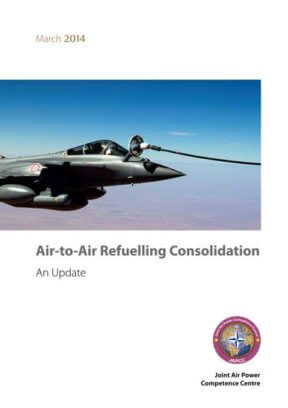‘Of all air power force-multipliers, Air-to-Air Refuelling (AAR) is amongst the most significant. It provides an essential capability that increases the range, endurance, payload and flexibility of all capable receiver aircraft, and is especially important when forward basing is limited or unavailable, or air base operations limitations impose constraints.’
NATO, Allied Tactical Publication (ATP) 3.3.4 Vol II AAR Doctrine (Brussels: NATO Standardization Agency, 2013)
Challenges to Future Success
There is little doubt as to the requirement amongst air forces for AAR capability. AAR capability is already, for more than half a decade, been identified as a capability shortfall in NATO, specifically amongst the European NATO members. Yet, time and again, the AAR capability has been proven to be effective in support of air operations over the former Yugoslavia, Iraq, Afghanistan, Libya and, most recently, Mali. Whether close to home or at extended range in support of expeditionary operations, there has been an increase in demand for AAR from a greater number of receivers. To the Cold War requirement to support strategic reach (Air Transport (AT), long-range strike) has been added the requirement to refuel Fighter/Attack, Intelligence, Surveillance and Reconnaissance (ISR), airborne Command and Control (C2) and Maritime Patrol assets.
With respect to ‘ownership’, there is no single office or focal point within the current NATO Command Structure to coordinate multinational AAR issues. The drafting of doctrine, equipment standardization agreements, tactical procedures, common qualification and currencies, and the training of planning staffs is being undertaken by a large number of national and multinational organizations, agencies and individuals. This lack of central coordination has led to AAR lessons being repeatedly ‘re-learned’ during the initial phases of air operations (e.g. analysis of the Balkan air campaigns is broadly similar to that of the Libyan campaign).
With potentially fewer AAR resources, NATO also faces an increasing demand for greater efficiency, largely driven by economics. Defence expenditure, amongst NATO countries is declining, and whilst new tanker platforms are more capable, they are being procured in fewer numbers so the overall capability may be reduced. Increasing the level of interoperability between existing resources is seen as a potential solution however, nations and industry must overcome their reluctance to share the technical data required to facilitate AAR clearances.
Given the continued fiscal constraints and procurement of fewer platforms, it is likely that, if these three areas are not invested in, AAR may become a limiting factor to NATO’s future ambition rather than its current status as a significant force-multiplier.
The Path Ahead
The aim of this publication is three fold: to educate the reader in the current status of NATO’s AAR capability; to explain, in detail, the areas of concern; and to inform the reader of solutions to address these concerns.











